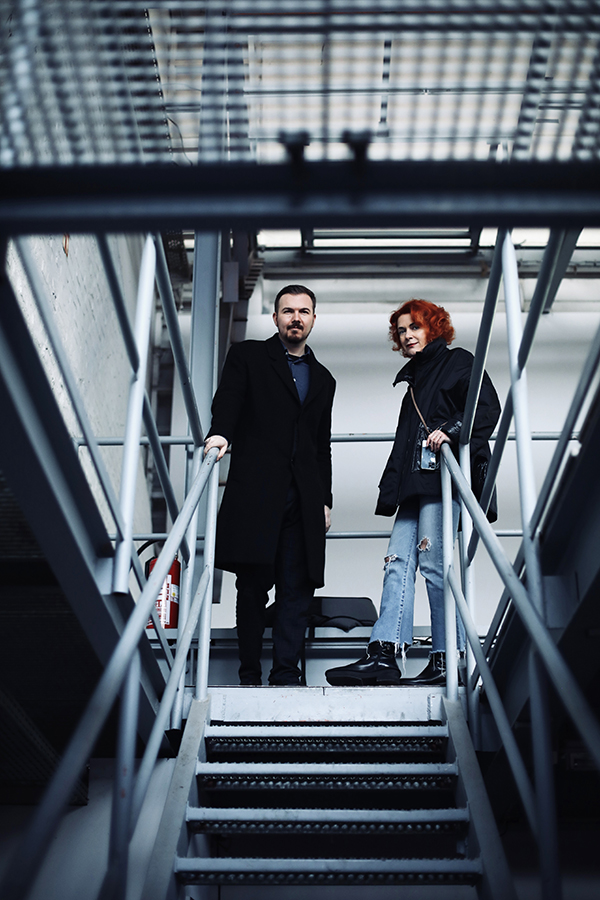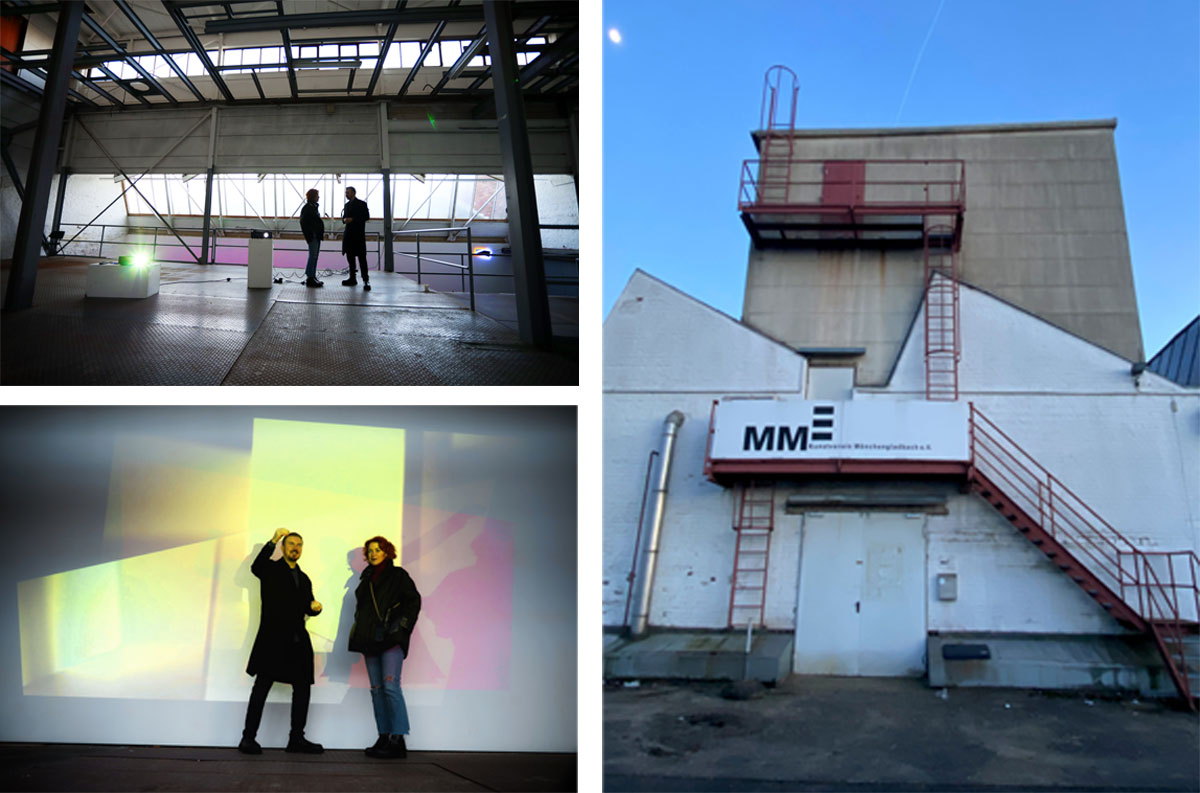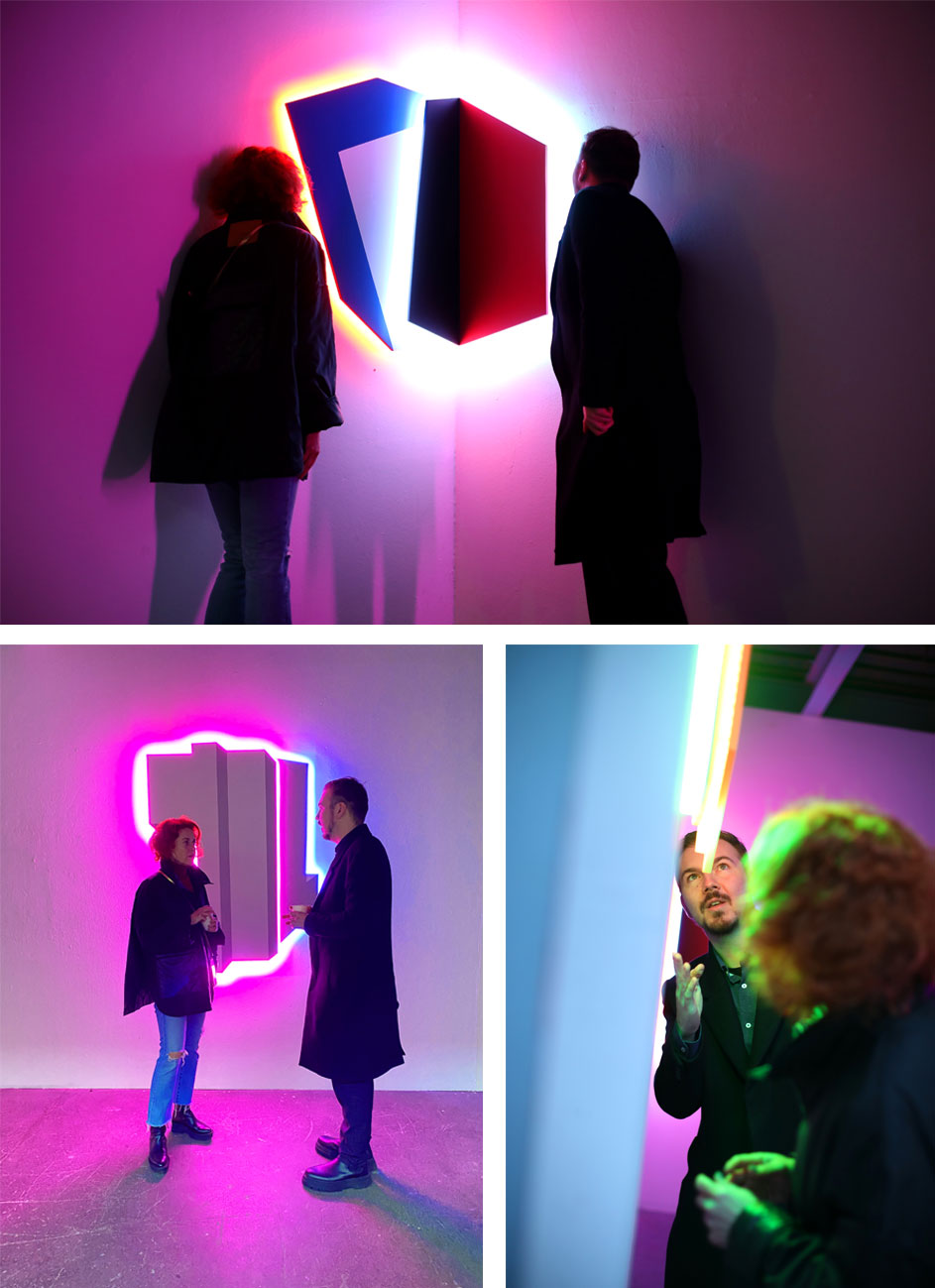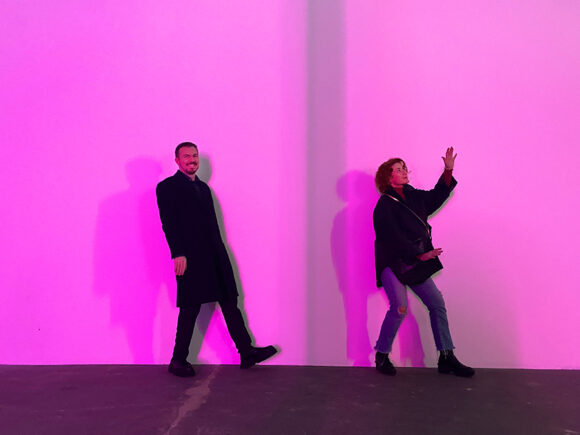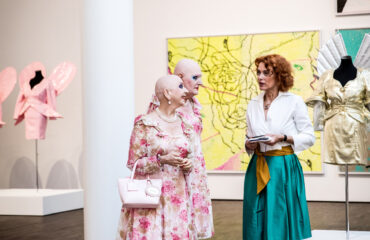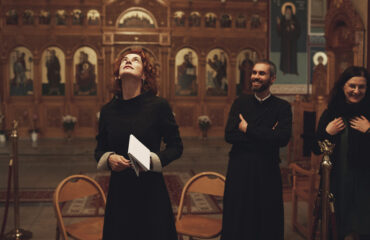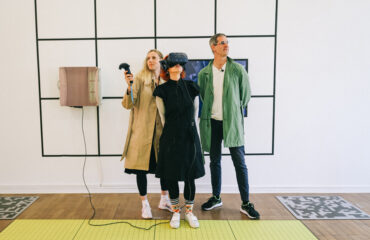Text: Dr. Elke Backes, Fotos: Natascha Romboy
Wer im Rheinland unterwegs ist und dort die Ausstellungen der upcoming artists erkundet, ist seinem Namen mit Sicherheit schon einmal begegnet. Ob Antichambre im Hotel Friends in Düsseldorf, Malkastenpark, MMIII Kunstverein Mönchengladbach, Quartier im Hafen Köln oder Krefelder Kunstverein, überall heißt es: kuratiert von Wilko Austermann.
O.l.: Malte Bruns (Malkastenpark Düsseldorf); o.r.: Hugo Lami (Antichambre/Hotel Friends Düsseldorf); u.l.: Christian Theiss (Kunstverein Krefeld); u.r.: From Oral to Aural over Cereal to Serial (Quartier am Hafen Köln).
Was genau definiert eigentlich die Aufgaben eines Kurators? Oder besser gefragt: Wie definiert Wilko Austermann selbst seine Aufgaben?
Wir treffen uns im MMIII Kunstverein Mönchengladbach, wo er am Beispiel der von ihm konzipierten Ausstellung plasma soil von Yoana Tuzharova über seine Leitideen berichtet. Unmittelbar wird deutlich, dass hier ein klassischer Fall vorliegt, der Berufung von Beruf zu unterscheiden vermag.
„Die Architektur dieser alten Industriehalle ist einfach fantastisch, um künstlerisch auf den Raum reagieren zu können. Seitens des Kunstvereins dürfen wir hier nach Herzenslust intervenieren, was zu immer neuen Experimenten herausfordert“, sagt Austermann begeistert gleich zu Beginn unseres Gesprächs. „So wurde auch mein Vorschlag aufgegriffen, nicht weiter über die Wintermonate mit dem Programm zu pausieren, sondern die Dunkelheit dieser Zeit zu nutzen, um Video- und Lichtarbeiten zu präsentieren. Als ich die Lichtskulpturen von Yoana Tuzharova beim Akademierundgang in Münster entdeckt hatte, habe ich sofort an diesen Ort gedacht und sie angesprochen.
Im Gespräch mit Wilko Austermann im MMIII Kunstverein in Mönchengladbach.
E.B.: Womit wir schon in die erste wichtige Aufgabe eines Kurators einsteigen können: die Auswahl oder auch Entdeckung von Künstlern. Wie ist dein Netzwerk entstanden und wo bist du unterwegs, um es zu erweitern?
Austermann: Unterwegs bin ich vor allem in NRW, weil ich in Düsseldorf lebe. Doch sind auch in der Zeit meiner Auslandssemester in Rom und Leeds und während meines Praktikums in Neapel viele internationale Kontakte entstanden, die zu unterschiedlichsten Projekten geführt haben.
Egal, wo ich mich gerade aufhalte, knüpfe ich Kontakte zur Kunstszene, weil das für mich ein wunderbarer Weg ist, in die Kultur einer Stadt oder eines Landes einzusteigen.
E.B.: Gibt es bestimmte Events, die du regelmäßig besuchst?
Austermann: Die Rundgänge in den Akademien Düsseldorf und Münster, in der Kunsthochschule für Medien Köln und der Folkwang Universität in Essen stehen bei mir ebenso im Kalender wie verschiedenste Galerie- oder Museumsausstellungseröffnungen.
E.B.: Kommt es häufig vor, dass sich – wie für diese Ausstellung von Yoana Tuzharova – dabei schon konkrete Ideen entwickeln?
Austermann: Ja, vor allem wenn ich plötzlich thematische Verbindungen zu anderen KünstlerInnen entdecke und sich darüber eine Vision zu einer Gruppenausstellung ausbildet. Das finde ich kuratorisch immer ganz besonders spannend und herausfordernd.
E.B.: Warum?
Austermann: Weil es mein Konzept verlangt, über die Präsentation genau jene inhaltliche Verbindung zu vermitteln, die ich darin gesehen habe. Oder anders gesagt, über die Präsentation zu einem Dialog herauszufordern, der die präsentierten Werke neu befragen lässt.
E.B.: In welchem Maße nimmt der Ausstellungsort Einfluss auf das Konzept?
Austermann: Architektur und Raumgefühl wirken entscheidend auf das Konzept ein. Es ist kein Einzelfall, dass die Ausstellung wie hier von Yoana sogar ortsbezogen entwickelt wird. Beispielsweise hängt diese Lichtskulptur ja nicht ohne Grund im rechten Winkel dieses Raumteils. Die Arbeit lädt dazu ein, sich ihren formalen Aufbau auch seitlich anzuschauen und parallel dazu die Vielfalt der verschiedenen Lichtreflexionen wahrzunehmen. Es ist insgesamt ein Spiel mit geometrischen Formen sowie mit Licht und Schatten, das Architektur und Kunst miteinander verbindet und die Räumlichkeiten im wahrsten Sinne des Wortes in einem neuen Licht erscheinen lässt. Dieser ganzheitliche Vermittlungsansatz ist mir immer wichtig in meinen Ausstellungskonzeptionen.
Wilko Austermann erklärt Details der Lichtskulpturen von Yoana Tuzharova.
E.B.: Was gehört über die Präsentation hinaus zu deinen Aufgaben?
Austermann: Ein Text über Ausstellung und KünstlerIn muss verfasst werden, eine Eröffnungsrede muss vorbereitet und gehalten werden und dann ist da natürlich noch die gesamte Pressearbeit einschließlich Social Media …
E.B.: Schätze ich das richtig ein, dass Social Media-Marketing und -Vermittlung generell zum neuen Aufgabengebiet eines Kurators gehören?
Austermann: Für mich auf jeden Fall. Es ist aber auch ein wertvolles neues Instrument, um neue KünstlerInnen – auch auf internationaler Ebene – entdecken und unmittelbar mit ihnen kommunizieren zu können. Das gleiche gilt auch umgekehrt. Ich bekomme viele Anfragen von KünstlerInnen, die mit konkreten Projektideen an mich herantreten. Ich empfinde es als ein fantastisches neues Netzwerk-Instrument, das es on top ermöglicht, über Kurzvideos auf Ausstellungen aufmerksam zu machen oder auch live in den Dialog mit Zuschauern zu treten. Ich liebe einfach den direkten Austausch über Kunst!
Wilko Austermann bei seinen Palastgesprächen im Museum Kunstpalast in Düsseldorf.
E.B.: Bist du ausschließlich als freier Kurator tätig?
Austermann: Nein. Seit Anfang dieses Jahres habe ich auch eine feste Stelle als Kurator im Museum Haus Opherdicke im Kreis Unna. Dort habe ich die Ausstellung „FACE TO FACE – Porträts aus der Sammlung Frank Brabant & Gäste“ konzipiert. Mit einer solch qualitativ hochwertigen Sammlung agieren zu können, war absolut toll. Über die Gegenüberstellung von Arbeiten aus der Klassischen Moderne und Arbeiten der Gegenwart konnte ich die Entwicklung der Porträtmalerei und auch die Einflüsse der Klassischen Moderne auf die zeitgenössische Kunst zeigen. Das hat mein Kunsthistoriker-Herz wirklich höher schlagen lassen.
E.B.: Und vermutlich hast du auch bei dieser Ausstellung wieder auf KünstlerInnen deines Netzwerks zurückgegriffen?
Austermann: Klar. Das bleibt nicht aus. Die Community wächst [lacht]. Und ich möchte schließlich dazu beitragen, dass ihre Kunst gezeigt und damit gefördert wird. Oder anders gesagt, dass über meine Ausstellungen ein Mehrwert ihrer Kunst kreiert wird.
Und auch bei dieser Antwort leuchten seine Augen. Wilko Austermann ist unverkennbar mit voller Leidenschaft dabei, wenn es heißt, KünstlerInnen eine spannende Bühne zu geben.
Und wie lässt sich abschließend die Frage nach seinen Aufgaben als Kurator zusammenfassen?
Netzwerken, über Kunst austauschen und nonstop auf Entdeckungstour sein, gehören unverkennbar zu seinen zentralen Aufgaben. Bilden diese Inspirationen doch die Grundlage für seine Ausstellungsideen.
Im nächsten Schritt wird aus der Idee ein Konzept, für das er mit dem Leitgedanken des ganzheitlichen Vermittlungsansatzes KünstlerInnen und spannende Ausstellungsorte in den Dialog bringt, den Aufbau koordiniert und begleitet, bevor es letztlich heißt, die über die Konzeption neu gewonnenen Erkenntnisse zu kommunizieren und möglichst viele Besucher zu gewinnen.
Neugierig geworden? Einfach seinen Instagram-Account abonnieren und die nächste seiner Ausstellungen besuchen. Lohnt sich!
Weiterführende Links
Instagram-Account von Wilko Austermann: https://www.instagram.com/wilkoaustermann/
Website MMIII Kunstverein Mönchengladbach: https://www.mmiii.de
Website von Yoana Tuzharova: https://www.yoanart.com
